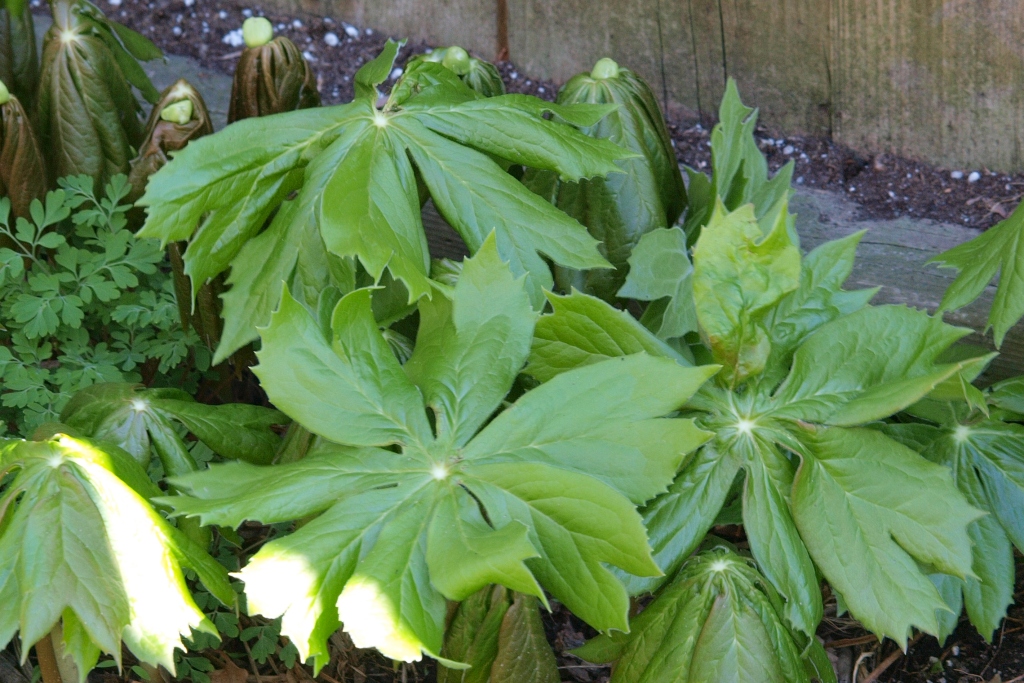

Podophyllum peltatum (Mayapple)
Podophyllum peltatum also called Mayapple or Mandrake is native to eastern North America from Texas to Ontario, Quebec and the Maritimes.
Mayapple emerges from the ground in April, with shoots that will each carry one or two lobed, umbrella shaped leaves. Stems bearing two leaves will have a developing flower bud right at the tip. As the leaves unfurl and grow upwards, the flower bud will grow and nod down under the leaves.
Over time the Mayapple will develop into a colony of plants interconnected by underground rhizomes. Colonies are known to live a hundred years or longer. The spread of the colony is easy to control by simply snapping off the stems in spring.
Mayapple is considered to have a number of medicinal uses. Extracts from Podophyllum peltatum were used as the active ingredient in Carter's Little Liver Pills from 1868 until 1959. The Mayapple fruit is considered edible in small quantities only when ripe. Unripe fruit, and all other parts of the plant including the seeds are toxic.
We have a good selection of one year old plants in one gallon containers available for spring pickup.
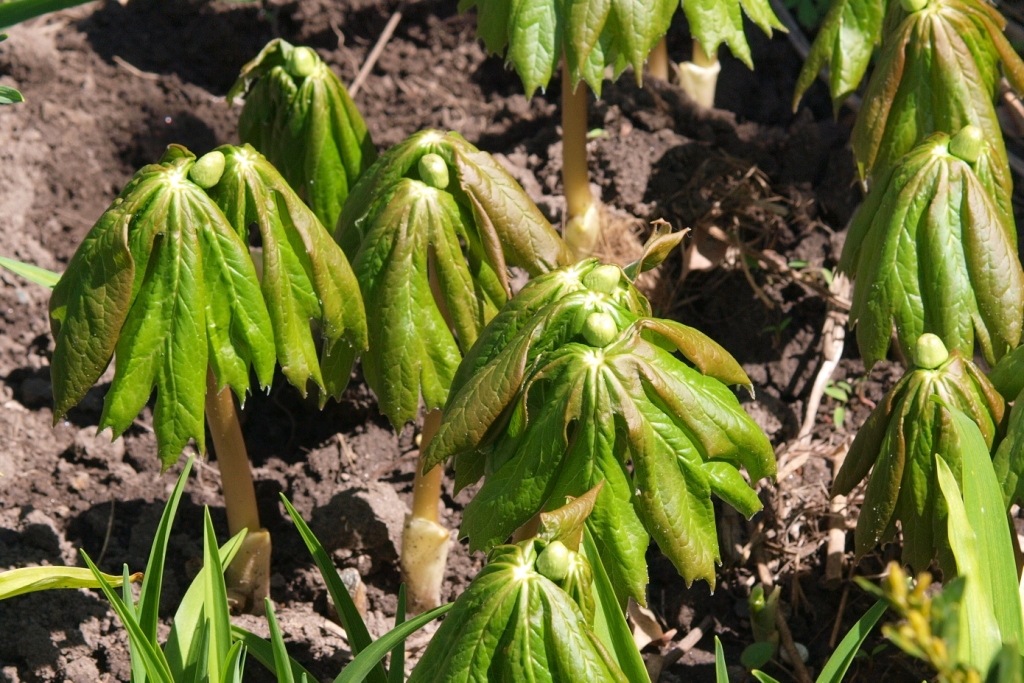
The umbrella shaped leaves of the Mayapple start to unfurl late April/early May. The developing flower buds can be seen at the tip of the stems.
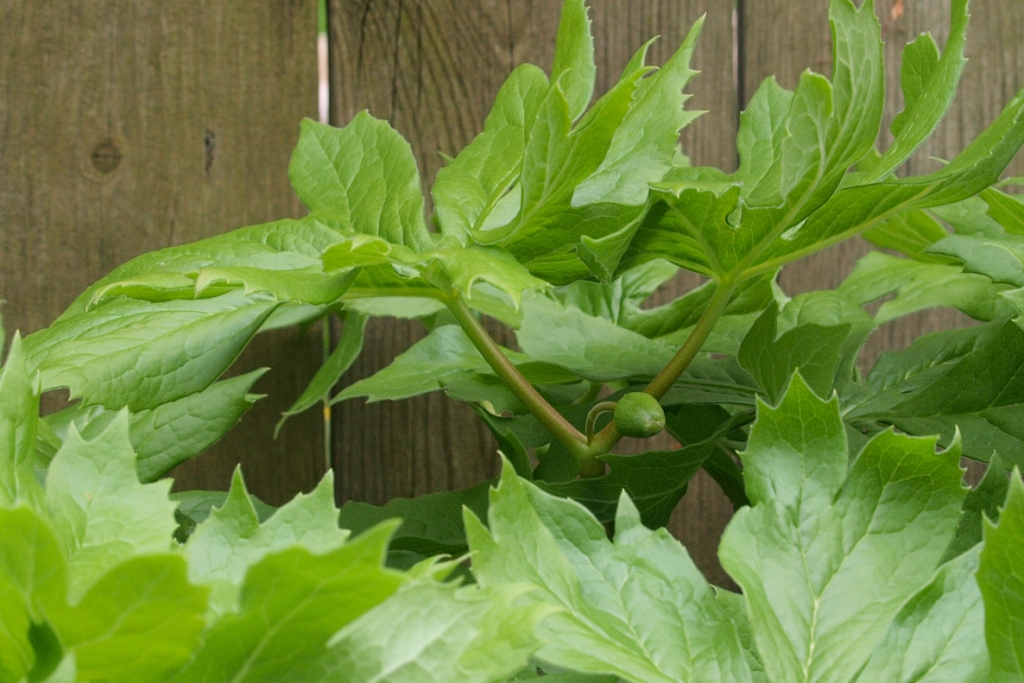
As the leaves grow upward, the flower bud is starting to nod down.
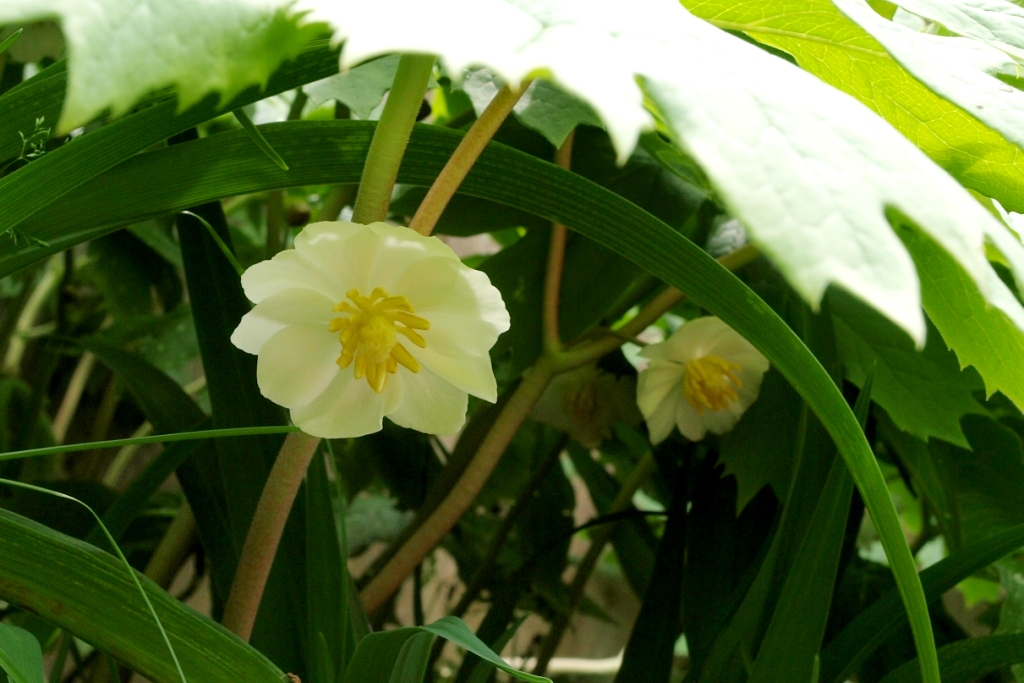
Bloom starts opening mid/late May, but you may not see it unless you look under the foliage.
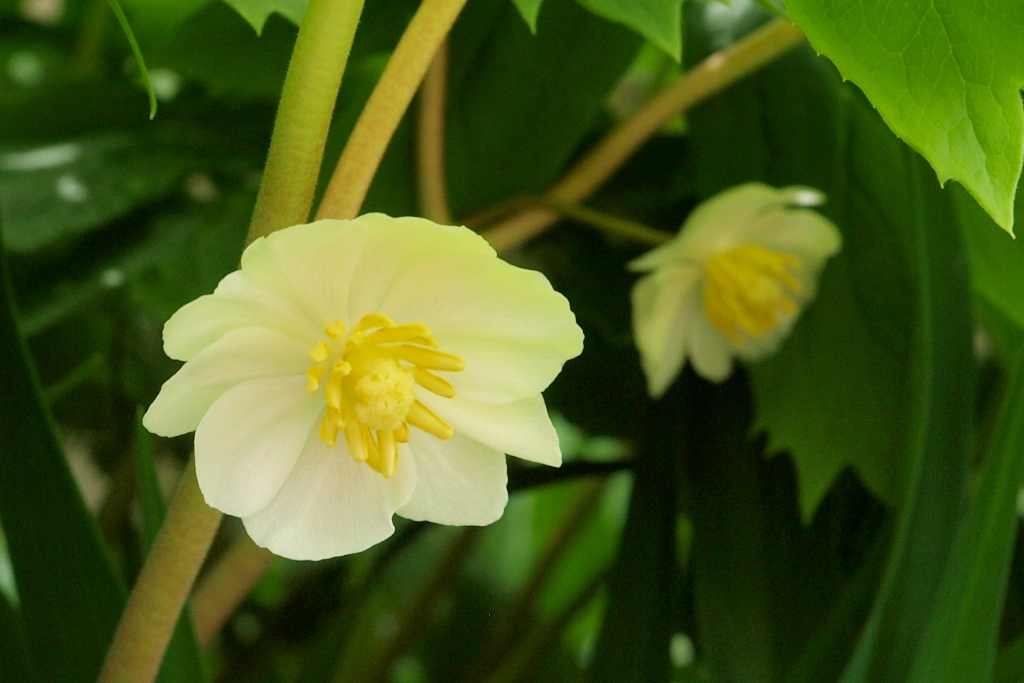
A closeup look at the bloom late in May.
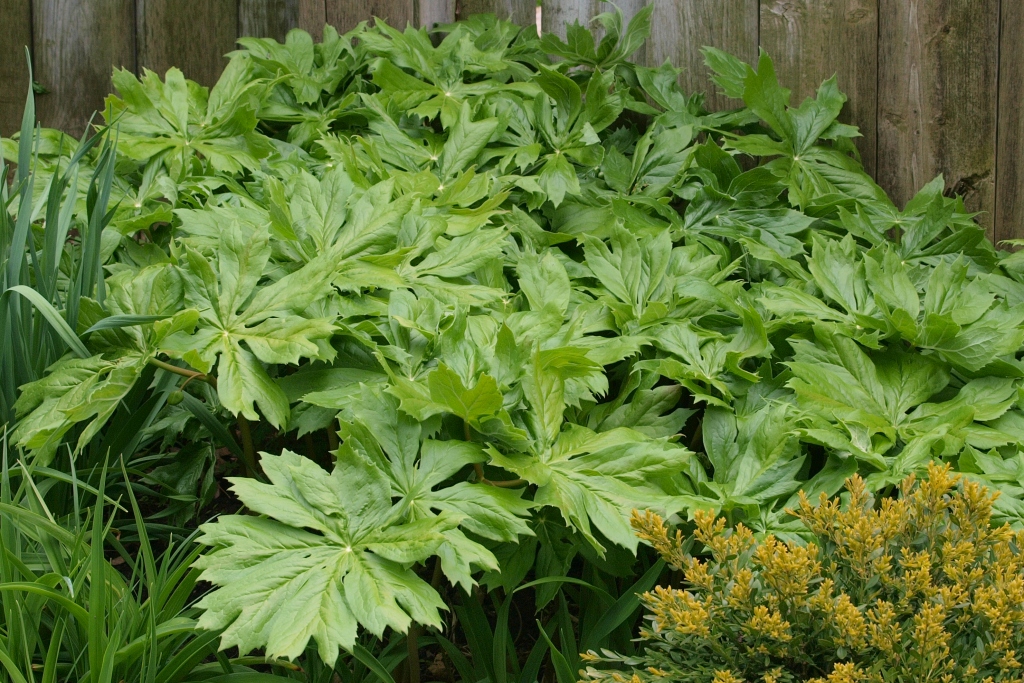
A mature colony of Mayapple. The beautiful glossy foliage will last right through the summer if there is adequate moisture and shade.